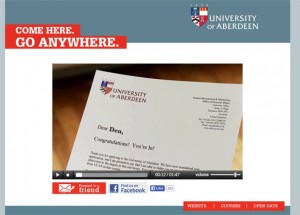One more item gleaned from the recent Career Xroads 8th Annual Sources of Hire Study:
Hires attributed to the Company Website are a problem for us (we maintain that the company web site is a destination not a source) and essentially represents one of every five external hires. There is no question about the importance of the company site’s staffing pages as a critical “channel” but its acceptance by corporations as a source likely occludes other, more relevant starting points driving prospects and candidates.
Many companies ask job applicants to self-report their point of entry (e.g., job board, employee referral, web search). The list of choices often includes the company website-and that is counted as the “source” for those who select it.
Career Xroads makes the point that only an unknown subset of the responding applicants actually either (a) went to the company website on purpose looking for a job, or (b) happened to look at the Careers page while visiting the site for some other reason. And of those two groups, only (b) might really represent a true source. In the case of (a), the applicant had some reason for going to the site–an ad, an article, a friend, etc. That reason is, in fact, the more primary source.
Accurate sourcing is important for calculating ROI on recruiting efforts, and also for successfully focusing recruitment efforts. So it would be useful to separate (a) from (b). But it would be even more useful to track the number of prospects who come to the corporate Careers site for some (any) reason, and then either stay to apply, or . . . leave in disgust, discouragement, or disinterest.
Some companies do track abandoned applications. And some measure time on site. But does anyone really know why prospects leave, whether sooner or later? Here again–some companies ask for feedback (“Was this page helpful to you?”) or prompt visitors to rate the site. But the problem is that most visitors will provide input only if they are annoyed or ill-served by the site. Only a few will take the time to send compliments or to drill down into thoughtful analysis of their experience.
The Career Xroads report found that a majority of respondents attributed around 20% of hires to their corporate website. That would be one hire in five-which really does seem a little dubious. Quoting the report: “We believe this thinking is too simplistic and continue to argue for a more substantive approach to measuring the influence of the corporate website without diluting the impact of other more legitimate sources of hire.”
Do you have a clue what role your corporate website really plays in attracting prospects or generating hires? Worth thinking about. (And if the answer is Yes . . . others would love to know your method.)
Thanks to Saxon State Library for the image of a seventeenth-century mechanical well.
Cynthia Giles has followed a serpentine career path from academia to publishing to marketing and design to information technology and corporate communications. There’s plenty of detail about this journey at www.cynthiagiles.com, but briefly--the common theme has been ideas, and how to present them effectively. Along the way, she became an accidental expert on data warehousing and business intelligence, and for the past ten years she has combined corporate contracting with an independent consulting practice that focuses on marketing strategy for smaller businesses and non-profits.
Having spent quite a bit of time looking for work, and anywhere from two weeks to two years inside a wide variety of American companies—she has given much thought to what works (and what doesn’t) when it comes to creating a great employment fit.



